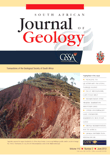
SOUTH AFRICAN JOURNAL OF GEOLOGY
Scope & Guideline
Pioneering research for a sustainable geological future.
Introduction
Aims and Scopes
- Geological History and Stratigraphy:
The journal emphasizes studies that explore the geological history of southern Africa, including stratigraphic frameworks, sedimentary processes, and basin analyses. - Mineral Resources and Geochemistry:
Research focused on mineral deposits, their formation, and geochemical characteristics is a core area, with papers often discussing the petrogenesis and economic significance of various minerals. - Palaeoclimate and Environmental Change:
The journal includes studies that investigate past climate changes through geological records, contributing to the understanding of environmental shifts over geological time scales. - Geochronology and Provenance Studies:
A significant focus is placed on the dating of geological formations and the provenance of sedimentary rocks through advanced techniques such as U-Pb zircon dating. - Tectonics and Structural Geology:
Research on tectonic processes, structural geology, and their implications for the geological evolution of the region is a recurring theme in the journal. - Geohazards and Environmental Geology:
The journal also addresses contemporary issues related to geohazards, their assessment, and the environmental implications of geological processes.
Trending and Emerging
- Archaean Geology and Ancient Earth Processes:
There is a rising interest in Archaean geology, particularly studies related to the Barberton Greenstone Belt and its implications for early Earth processes and crustal evolution. - Geochemical and Isotopic Studies:
An increasing number of papers are utilizing geochemical and isotopic analyses to investigate mineral genesis, provenance, and environmental changes, showcasing a trend toward precision in geological investigations. - Advanced Geochronological Techniques:
Publications utilizing sophisticated geochronological methods, such as high-precision U-Pb dating, are on the rise, reflecting a trend towards improving the chronological understanding of geological events. - Environmental Geology and Geohazards:
Research addressing environmental impacts of geological processes and the assessment of geohazards is gaining traction, highlighting the journal's engagement with contemporary issues. - Integration of Remote Sensing and Geospatial Technologies:
The application of remote sensing and geospatial technologies in geological studies is increasingly common, indicating a shift towards modern methodologies in geological research.
Declining or Waning
- Late Quaternary and Archaeological Geology:
Research related to late Quaternary geological processes and archaeological implications has seen a reduction, possibly due to a shift towards more ancient geological studies. - Non-mineral Resource Geology:
Themes focusing on geological aspects unrelated to mineral resources, such as general geological mapping or non-economic geology, seem to be receiving less attention in favor of economically relevant studies. - Geological Modeling and Theoretical Studies:
There is a noticeable decline in purely theoretical or modeling studies, with a trend towards empirical research that provides direct geological insights. - Regional Geology Outside Southern Africa:
Papers focusing on geological aspects of regions outside southern Africa have become less frequent, indicating a more concentrated focus on local geological studies.
Similar Journals
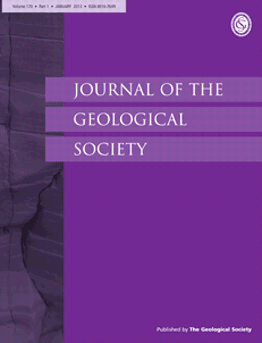
JOURNAL OF THE GEOLOGICAL SOCIETY
Unveiling the Secrets of Our Planet, One Article at a TimeJOURNAL OF THE GEOLOGICAL SOCIETY, published by GEOLOGICAL SOC PUBL HOUSE, is a premier academic journal dedicated to advancing the field of geology. With a rich history dating back to 1845 and continuously published until 2024, this journal caters to a diverse audience of researchers, professionals, and students involved in earth sciences. The journal is recognized for its high impact factor, situating it in the top Q1 category in the field of geology, as indicated by its impressive Scopus rank of #49 out of 321, positioning it at the 84th percentile in Earth and Planetary Sciences. This esteemed scholarly platform promotes rigorous peer-reviewed research, ensuring that novel findings contribute to the global geological discourse. Although it operates under a subscription model, the journal's archive offers valuable insights for anyone pursuing excellence in geological research. The JOURNAL OF THE GEOLOGICAL SOCIETY stands as a vital resource for disseminating scientific knowledge and fostering educational growth within the field.

Frontiers of Earth Science
Advancing Knowledge in Earth and Planetary SciencesFrontiers of Earth Science is a prominent academic journal in the field of Earth and Planetary Sciences, published by Springer. With an ISSN of 2095-0195 and an E-ISSN of 2095-0209, this journal serves as a significant platform for researchers and professionals to disseminate their findings from 2007 to 2024. It is recognized for its impactful contributions within the category of Earth and Planetary Sciences, boasting a respected Q2 ranking in 2023. With a Scopus ranking of 64 out of 195, placing it in the 67th percentile, Frontiers of Earth Science continues to drive academic dialogue and innovation. The journal is dedicated to exploring a diverse range of topics, including geology, meteorology, and environmental science, and amplifying the understanding of Earth systems through rigorous research. Located in New York, USA, this journal embraces an Open Access model, ensuring that groundbreaking research is readily available to the global scientific community, thereby enhancing its accessibility and impact.
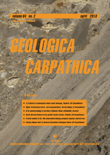
GEOLOGICA CARPATHICA
Bridging the Gap Between Theory and Practice in GeologyGEOLOGICA CARPATHICA, with ISSN 1335-0552 and E-ISSN 1336-8052, is a distinguished open access journal published by the Slovak Academy of Sciences Geological Institute, serving as a pivotal platform for the dissemination of research in the field of Geology. Established in 1991 and continuing through 2024, the journal is recognized for its significant contributions to Earth and Planetary Sciences, evidenced by its 2023 Scopus ranking placing it in the second quartile (Q2) within Geology. With an H-index that showcases its impactful publications, GEOLOGICA CARPATHICA is committed to fostering scholarly communication while promoting accessible research, having adopted an open access model since 2009. Located in beautiful Bratislava, Slovakia, this journal aims to engage a global audience of researchers, professionals, and students interested in ecological, geological, and environmental studies, making it a prominent resource for enriching the scientific community's understanding of the Carpathian region and beyond.

ACTA PETROLOGICA SINICA
Pioneering Research in Geochemical TransformationsACTA PETROLOGICA SINICA, published by SCIENCE PRESS, is a distinguished journal in the field of geochemistry and petrology, known for its commitment to advancing the understanding of Earth's materials and processes. With an impact factor ranking it in the second quartile (Q2) of its category and a respectable Scopus rank of 64 out of 154, this journal serves as a vital platform for researchers, professionals, and students alike, facilitating the dissemination of innovative studies and findings from 1980 to the present. Its robust editorial board and diverse array of articles make it an invaluable resource for those engaged in the intricate analysis of petrological phenomena and geochemical transformations. Published in China, ACTA PETROLOGICA SINICA provides access to significant original research, reviews, and insights essential for advancing knowledge and fostering collaboration in the earth sciences.

Geopersia
Highlighting Cutting-Edge Research in Geology and Petrology.Geopersia is a prominent academic journal published by UNIV TEHRAN, focusing on the interdisciplinary fields of Earth-Surface Processes, Geology, and Geochemistry and Petrology. With an ISSN of 2228-7817, this journal aims to disseminate high-quality research from 2017 to 2024, showcasing innovative studies that contribute to the understanding of geological phenomena. Despite the absence of an open access model, Geopersia maintains a significant scholarly presence, reflected in its categorization within the Q3 and Q4 quartiles in several related fields for 2023. The journal has garnered attention in the academic community, currently ranked in the 43rd percentile for Earth-Surface Processes and 41st percentile for Geology according to Scopus rankings. Researchers, professionals, and students are encouraged to engage with this valuable resource, which not only promotes comprehensive exploration of geological sciences but also fosters collaboration and discussion among experts across the globe.

Austrian Journal of Earth Sciences
Fostering Global Collaboration in Earth SciencesThe Austrian Journal of Earth Sciences, published by SCIENDO, is an esteemed open-access journal specializing in the disciplines of geology, paleontology, and stratigraphy. With an ISSN of 2072-7151, this journal has established itself as a significant platform for innovative research and scholarly communication in the earth sciences. Since its inception in 2007, it has continuously expanded its influence, achieving notable rankings in the Scopus database—#113 in Geology, #42 in Paleontology, and #21 in Stratigraphy, demonstrating its commitment to high-quality publications. The journal holds prestigious quartile rankings of Q1 in both Geology and Paleontology and Q2 in Stratigraphy as of 2023, reflecting its impact and relevance in the scientific community. Researchers and students alike are encouraged to explore and contribute to the evolving discourse within this dynamic field, as the Austrian Journal of Earth Sciences fosters collaboration and knowledge sharing across global platforms.
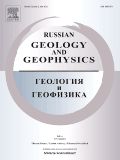
Russian Geology and Geophysics
Advancing Earth Sciences through Rigorous ResearchRussian Geology and Geophysics is a seminal journal published by GEOSCIENCEWORLD that plays a pivotal role in the dissemination of vital research within the realms of Earth-Surface Processes, Geology, and Geophysics. With an ISSN of 1068-7971 and an E-ISSN of 1878-030X, this journal has witnessed a continuous evolution since its convergence in 2007 and is poised to thrive through 2024. While it is not an Open Access journal, it is recognized for its significant contributions to the academic community, holding a respectable Q2 ranking in Earth-Surface Processes and Q3 rankings in both Geology and Geophysics as of 2023. The journal’s impact factors align it within competitive quartiles, marking it as an essential resource for researchers and professionals seeking to stay at the forefront of geological and geophysical sciences. By publishing high-quality peer-reviewed articles, the journal fosters an environment of knowledge sharing and innovation, making it indispensable for students, practitioners, and scholars alike who are dedicated to advancing our understanding of Earth's complex systems.

Bulletin of the Mineral Research and Exploration
Bridging the Gap Between Research and ApplicationBulletin of the Mineral Research and Exploration, published by MADEN TETKIK VE ARAMA GENEL MUDURLUGU-MTA in Turkey, is a prominent open-access journal that has been disseminating vital research in the fields of geology and geotechnical engineering since 1936. With an ISSN of 0026-4563 and a commitment to sharing knowledge without barriers, this journal fosters an inclusive environment for researchers, professionals, and students alike. The journal is recognized for its contribution to the scientific community, illustrated by its Q3 ranking in Geology and Q4 ranking in Geotechnical Engineering and Engineering Geology for the year 2023. Despite its solid performance, the journal remains dedicated to improving its Scopus rankings, currently positioned at #230 out of 321 in Earth and Planetary Sciences for Geology, and #169 out of 229 in Geotechnical Engineering. The journal's historical convergence of years emphasizes its longstanding relevance and adaptability in disseminating cutting-edge research. By offering open access, it ensures that vital geological and engineering insights are readily available to a global audience, thereby enhancing collaboration and advancing knowledge in these crucial fields.
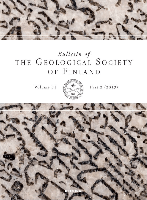
BULLETIN OF THE GEOLOGICAL SOCIETY OF FINLAND
Advancing geological knowledge since 1968.BULLETIN OF THE GEOLOGICAL SOCIETY OF FINLAND, a distinguished publication in the field of Geology, has been at the forefront of scientific discourse since its inception. Published by the Geological Society of Finland, this journal offers an Open Access platform for researchers since 1968, ensuring that high-quality geological research is widely accessible. With an ISSN of 0367-5211 and E-ISSN 1799-4632, the journal aims to disseminate significant findings in Earth and planetary sciences, contributing to a richer understanding of geological phenomena. Situated in Finland and headquartered at the Finnish Museum of Natural History, University of Helsinki, it serves as a pivotal resource for professionals, students, and researchers, maintaining a respectable Q3 category rank in Geology as of 2023 within Scopus' metrics. The journal is committed to fostering the advancement of geology through rigorous peer-reviewed articles, innovative research methodologies, and interdisciplinary approaches, helping to bridge gaps in knowledge while inspiring new generations of geoscientists.
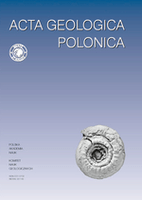
ACTA GEOLOGICA POLONICA
Exploring the depths of Earth and planetary sciences.ACTA GEOLOGICA POLONICA is a distinguished journal published by the Polska Akademia Nauk, in collaboration with the University of Warsaw's Geology Department. Since its inception, it has served as a vital platform for disseminating innovative research in the field of Geology, reflecting a commitment to advancing scientific knowledge in Earth and planetary sciences. With an ISSN of 0001-5709 and an E-ISSN of 2300-1887, this journal provides a rigorous review process and is classified in the Q3 quartile for Geology as of 2023, indicating its growing influence in the discipline. Despite not being open access, the journal facilitates meaningful contributions that span a range of geological topics from fundamental research to applied sciences, thereby enriching the academic landscape. Researchers, professionals, and students alike are encouraged to engage with the valuable findings and discussions contained within its pages, which continue to shape the future of geological inquiry.